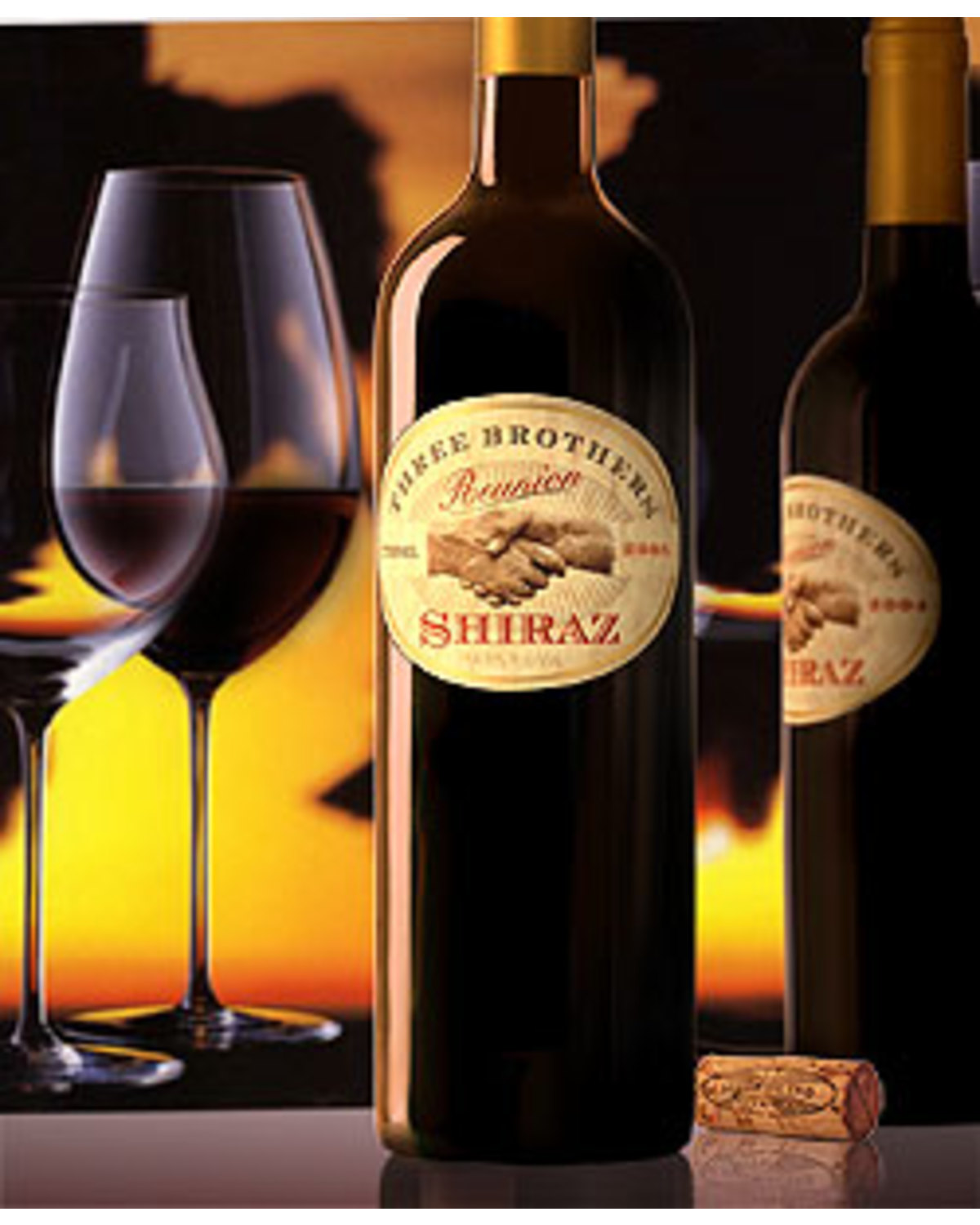
- 93
2005 Three Brothers Reunion Shiraz
The current oversupply of grape material in the market place has created many opportunities for winemakers to produce extraordinary value for money wines.
These wines are composed of various components, which are selected in order to maximize a wine’s flavour profile and add complexity to the finished wine. The process requires a winemaker to “visualize” in a sensory manner the final flavour profile and structure so that the whole is greater than any of its component parts. The blending process is the most important step in the creation of a wine of distinct and unique character, however, apart from the winemaking team, the wine lover is generally not aware of the procedures.
The early “mental map” of wine takes place whilst the winemaker is tasting berries in the vineyard. The juice that he tastes is sweet, full of sugar and acid but relatively simple, yet the process of converting juice to wine involves a series of complex steps which the winemaker imagines, and ultimately directs the outcome. If there is any single reason to blend a wine, it is to do with the pursuit of complexity of flavour – the creation of a WOW factor.
Components may be taken from several vineyard sites, with different picking dates, varying alcohol levels, different oak types (as well as differing levels of barrel toasting). Different fermentation techniques also add layers to a wine. Adding back pressings is yet another way of building a wine’s complexity. Wine lovers may have observed the use of multiple clones being mentioned on wine labels. Whilst this may at first appear to be mumbo jumbo to many, the fact remains that different clones of the same grape variety have different aroma and flavour characters.
Internationally, Australian winemakers are regarded as the world’s most adventurous blenders, having created such standards as Cabernet and Shiraz, Semillon and Chardonnay, Viognier and Pinot Gris. It is this level of inventiveness that has brought Australian wines such great acclaim, although blending is certainly not an Australian invention. Blends are rarely made at the fermentation stage – although there are exceptions. The cofermentation of Shiraz and Viognier add considerably to the combined flavour profile. The blending process can take place any time between the completion of fermentation and prior to bottling. Winemakers have developed their own stylistic preferences. The outcome of the final blend is imprinted on the wine by a winemaker in a similar way that an artist conceives the finished painting. Great blends are made with a specific purpose, and are not random creations of a chaotic process.
Wine maker Ben Riggs is one of Australia’s great blending masters and the modestly priced Three Brothers Shiraz bears testimony to that fact. The 2002 vintage was the first to capture the imagination of the world. 2003 was even better again, 2004 has just finished and was received with overwhelming enthusiasm. The 2005 has the potential to be better again – a fact that is hard to believe unless one comprehends that as the years have rolled out the grape surplus has increased, and as a result the material available for blending options has also increased exponentially. Despite the increased volume of fruit, Riggs still pays his growers a fair price to ensure continuing supply of great fruit into the future.
In only 4 vintages the Three Brothers Reunion Shiraz has established a reputation as one of Australia’s best value reds, consistently delivering quality above and beyond it’s miserly $10 price tag.
Tasting Note: The Three Brothers Shiraz continues to over deliver with a quality to price ratio that is only possible in a market experiencing massive grape surpluses. Winemaker Ben Riggs again demonstrates that he is the master of Shiraz at any price point, with the Three Brothers enjoying huge export success. Almost opaque deep crimson colour with deep crimson hue. The nose over delivers with a profile more likely to be found in a $20 to $30 bottle of red, not a $10 wine. Lifted notes of spice, cedar, blackberry, plum and liquorice allsorts are followed by a vanilla end note. The palate is very spicy, with flavours of liquorice all sorts, black pepper and plum emerging over a particularly spicy back palate. The wine is perfectly balanced, with velvet tannins and a very long aftertaste of black pepper, plum, liquorice allsorts and spice. Cellar: 3-4 years (2009-2010) Alc/Vol: 14.5%
to most of Australia
